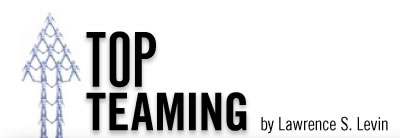What Just Hit Us? Adaptive Strategies for Change
About 3 weeks ago we were with a team of Global HR officers. The original mission was to help them become an even higher performing team – a Top Team. But there was something missing in the room – something that was obvious, but not explainable on their Team Assessment. There was an enormous lack of energy among the people.
Then they told the story: Their parent company had decided to make some significant structural and personnel changes that would rock the company. Our client group was told that these changes would not impact them or their global responsibilities. But that was not the reality. It turned out that they were significantly impacted by a reduction in their ranks, and were also tasked to carry this “head count reduction” (a term I am not fond of) across their regions thus earning a reputation as “corporate assassins.”
As one of the leaders said, “It was as if we were enjoying a clear sunny day, then all of a sudden we were hit by a tornado.” And then our observation became clear – they were the survivors who were still numb with shock, unable to believe either in the weather report, or on their own eyes. How do they adapt to this? How do they earn trust? How do they let themselves trust?
Virtually none of us has complete control over our own destiny. Whether we work for others, or are self-employed, we are still hostage to the unpredictable. And, given the increased sense of ambiguity, volatility, and rapid change in an interconnected world, this sense of unpredictability is, in fact greater than it ever was. So what do we do? How do we adapt to change? How do we best respond to it?
We know that the two primary variables in the experience of stress are control and predictability. Thus the more we have a sense of what may happen and the more we can do something about it, then the experience will be less intense and we will likely respond and rebound faster.
For this team, recovery and resiliency required them to do several things very differently:
- Pull together as a team. What must they do for themselves and for the organization? Do not allow a protective silo mentality to emerge. It will not work.
- Stay in closer touch with the functional business leaders. In every case, the business leaders wanted HR to be closer to them, to better understand the business, to ask lots of questions, and thus have better eyes and ears about the forces which might impact the business and the leaders.
- Do not, ever, believe that they (we) exist on an island and that issues and forces across the pond(s) will remain there. They won’t.
- Ensure that open dialogue is occurring between you and your leaders, and between them and their leaders so that the likelihood of surprises will diminish, No guarantees here, but always look to lower the odds.
- Operate with positivity and show up as a leader that people want to talk with. This gives you greater access and credibility to know the business and the key people. It is also your best personal reaction to surviving the storms. And whenever possible, predict the next tornado.
What examples do you have of unpredictable change and what are the great examples of how people best respond to and plan for it?
